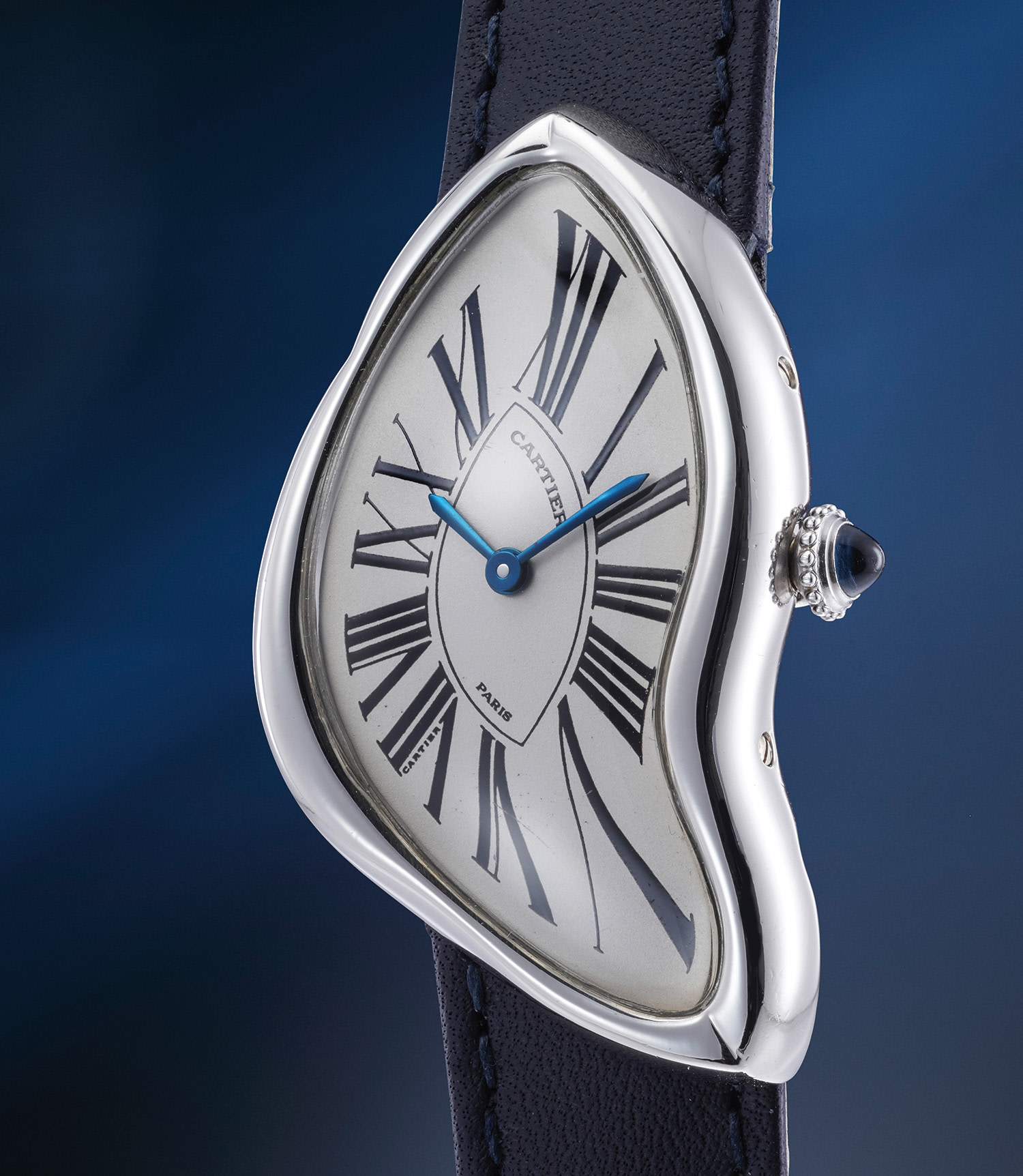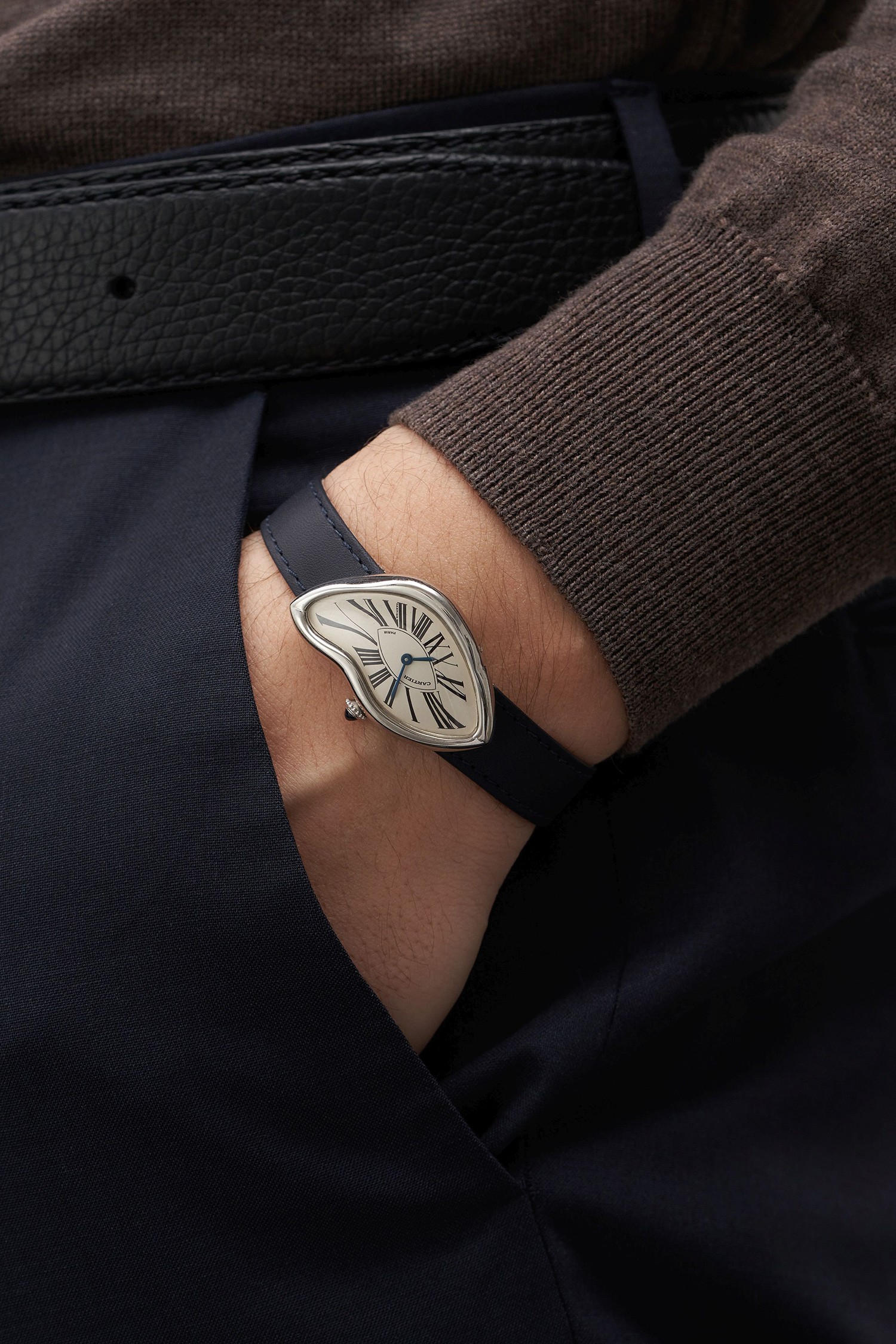









113
Cartier
Crash
A highly desirable and extremely scarce asymmetrical platinum wristwatch
Full-Cataloguing
Now well-established in contemporary popular culture, the Crash remains ever more desirable. This Cartier Crash, crafted in noble platinum and dating from the early 1990s, is a restrained and elegant iteration of the earliest versions of the Crash. With a manually-wound movement, the case is entirely hand-made, leading to a very small production run, possibly as low as eight pieces ever created in the 1990s. While Phillips has had the fortune of selling two examples of the platinum Crash in recent memory, the truth is that they appear at auction infrequently, for obvious reasons due to scarcity.
This particular example features crisp engravings and hallmarks to the caseback, and a nearly-flawless grené dial with carefully applied and raised numerals, the curves of which mirror that of the case. Accompanied by the matching asymmetrical buckle, it is an icon of the “swinging Sixties” that endures to the present day.
Cartier
FrenchWith the Constitution of 1848 came a new standard for luxury in France. Founded one year prior by Louis-Francois Cartier, the house of Cartier was one of the first to use platinum in jewelry making. This incredibly expensive material became the stepping-stone for Cartier to experiment in form, mechanisms and attitude. It helped men move from pocket watches to wristwatches, effectively making the watch much more functional and prominent in a man's overall wardrobe.
Cartier did not only touch on functionality. Inspired by a commissioned painting by George Barbier featuring a black panther at the feet of an elegantly bejeweled woman, Cartier began incorporating wild animals in his designs—most notably, Cartier Panthère rings, bangle bracelets and watches. Yet it wasn't until the late 1960s that the house of Cartier debuted their iconic yellow and rose gold LOVE collection, which includes the famous bracelet that only a special screwdriver can open.